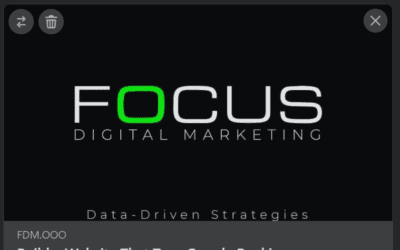What is Billboard Advertising Really For?
At first glance, billboard advertising might seem like a straightforward marketing tactic aimed at eliciting an immediate response from the viewer. However, the essence of billboard advertising delves much deeper into the psychology of branding and consumer behavior. Far from just selling a product or service directly or demanding an immediate call to action, billboard advertising serves a more nuanced role in marketing: it builds subconscious brand awareness.
The Subtlety of Billboard Advertising
Imagine driving down the highway, your eyes glance at a billboard displaying a sleek, new smartphone. You don’t need one right away, so you drive on, over the next few weeks you see that same brand’s billboards 10-15 times. Weeks later, when your phone breaks, your mind unconsciously recalls that brand. This is the real power of billboard advertising. It’s not about the immediate sale; it’s about planting a seed in the consumer’s mind, ensuring that when they do need a service or product, your brand is the first that comes to mind.
Billboard Advertising: A Psychological Approach
Consider the phenomenon where, after purchasing a new car, you suddenly start to see the same model everywhere you go. It’s not that these cars have magically appeared; rather, your awareness has heightened. Similarly, billboard advertising aims to increase brand visibility in a way that, when consumers are ready to make a purchase, the repeated exposure to the brand influences their decision-making process subconsciously.
Studies show that repeated exposure to a brand increases familiarity and trust, key components in a consumer’s decision to choose one brand over another. This strategy, known as the “mere exposure effect,” leverages the power of visual cues to enhance brand recall and preference subtly.
Examples of Effective Billboard Advertising
Take, for instance, a billboard for a popular beverage brand, displayed not with a call to action, but simply showcasing the product in an enticing light. Over time, viewers subconsciously associate this beverage with refreshment and enjoyment. When faced with a choice in a store, they gravitate towards the brand they’ve been exposed to, often without realizing why.
Another example is a billboard from a technology company that features its logo prominently against an intriguing backdrop. There’s no direct sales pitch, but the continuous exposure to the logo builds brand recognition. When consumers find themselves in need of tech products or services, they’re more likely to think of this company first.
Doing It Wrong
Diving into billboard advertising could totally flip the script on how businesses approach their marketing playbook. But here’s where it gets messy – loads of them are doing it wrong. They’re trying to grab that immediate sale, cramming their billboards with tons of details. End result? A cluttered mess. It’s not clever or eye-catching, and it misses out on nailing that one, powerful message. Imagine cruising on the highway at 70 mph, trying to catch a glimpse of a billboard that’s practically shouting a sale at you and listing off a dozen features. It’s a no-brainer why that strategy falls flat. Compare the 2 examples below.


Wrapping Up
When you think about it, you can probably picture a few billboards right now, and after reading this, you’re likely going to notice them even more as you’re cruising around. If the world of billboard advertising is totally new to you and you’re curious but not rushing into anything, here’s a little homework. Start keeping tabs on the billboards in your neck of the woods over the next couple of months. Keep an eye on which ones stick around for a short stint and which ones seem to be part of the scenery. It’s pretty straightforward – if a billboard’s doing its job, it stays up. You’ll notice they’ve all got something in common: they’re sleek, simple, and drive home a single message, even if it’s not an obvious one.
How Much Do Billboards Cost?
1. Major Highways
- Traffic Volume: Very high, especially near urban centers.
- Visibility: Excellent, with long viewing times due to higher speeds.
- Average Pricing: Can range from $1,500 to over $10,000 per month. Pricing increases with traffic volume, billboard size, and proximity to urban centers.
2. Downtown Areas
- Traffic Volume: High, with a mix of vehicle and pedestrian traffic.
- Visibility: Good, with shorter viewing times but higher chances of repeated views.
- Average Pricing: Can range from $2,000 to $15,000 per month. Premium prices for digital billboards or high-traffic intersections.
3. Suburbs
- Traffic Volume: Moderate, with lower density than urban centers but can have targeted local traffic.
- Visibility: Moderate to high, depending on location and size.
- Average Pricing: Can range from $750 to $2,500 per month. Prices vary based on the suburb’s population density and proximity to major roads.
4. Rural Areas
- Traffic Volume: Low, but can target specific demographics such as travelers or local residents.
- Visibility: High, with longer viewing times due to lower speeds.
- Average Pricing: Can range from $250 to $750 per month. Lower pricing due to lower traffic volumes but can offer valuable niche targeting.






